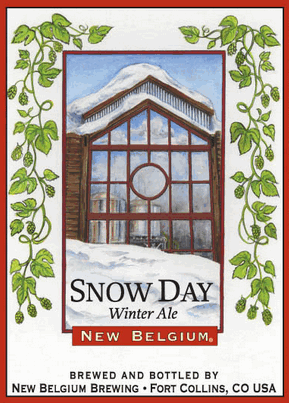Encountering folks of various levels of beer experience comes with the territory on weekends for me, where I spend my time working at a beer distributor with a solid selection of imports, macros, regionals and micros. I enjoy recommending good beer (I recently sold a friendly couple on a Stoudt's variety pack, which is excellent, and a case just so happens to be sitting in my own kitchen) and have no problem advising customers on small beer related dilemmas (the cheaper the beer, the more bottles matter and glasses are rendered unnecessary).
There are a few of our customers of micros and the like that, as to be expected, know what they're looking for and know what they're talking about. And there are many more, usually macro drinkers, who act as if. They tend to hint at branching out with a different beer, but more often than not settle for an ordinary "go-to." They buy the cheap stuff and, to the chagrin of all employees, bother asking on the way out, "How much for the Chimay?" Everyone present, including the customer, knows that that case of Chimay Red will never make it to his car.
And then there's the kind of guy who comes in and says he's looking for a "light ale." He likes "light ales." You know
, like Yuengling's Lord Chesterfield Ale...He doesn't like
"dark ales like pilsners." Which brings me to the two big misconceptions about beer in the American mainstream.
One, and I say this without snobbery:
an ale is not synonymous with a lighter and lower alcohol beer, and a lager is not synonymous with a larger, robust beer. If one is really interested in beer, these are very basic facts, and among the most important to know.
The way I prefer to break it down is as follows: all beer is either an ale or lager (the type or class, though class may have a negative connotation), and from there are styles within the type (a stout is one style of ale, a pilsner is one style of lager). Why are there two types? Yeast strains and fermentation temperatures (ale yeasts go to work at room temperature and lager yeasts work in colder temperatures). Ales can be imbibed literally 3-4 weeks after they are brewed. The best lagers take about 2-3 months, though macros, in some cases, cut corners and push their lagers on the shelf in a shorter period.
The second misconception:
some seem to mistake bitterness for darkness. This is simply a symptom of unestablished palates and/or drinking from the bottle or can. On more than one occasion I've had friends or family say they had found a beer I recommended to be too dark for their tastes, even though the beer I recommended was a golden colored pilsner, a style in which dark malts are traditionally absent. In actuality, they were talking about the hoppy character of the brew.
A little light reading of reputable beer literature with a good local beer in an appropriate glass by one's side will do the trick for folks who've begun to show interest in what I consider to be the greatest beverage on earth, but feel they've got a few questions yet to be answered. After all, it worked for me and continues to do so. Enjoy your beer.

